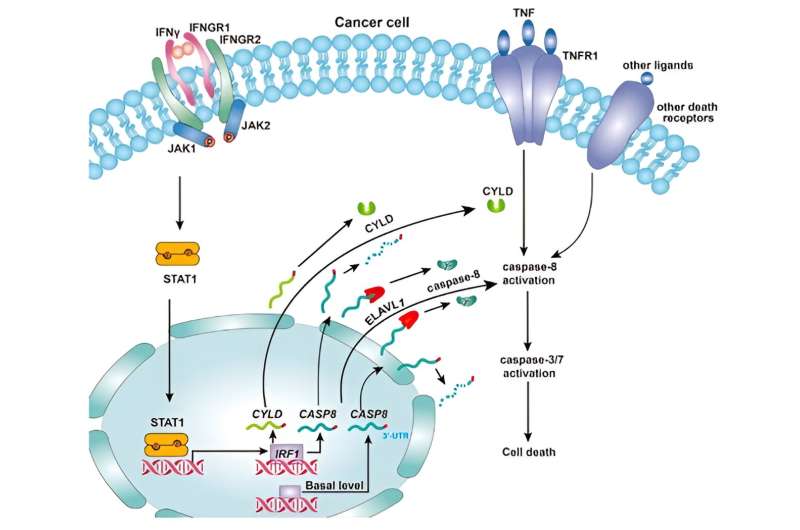This article has been reviewed according to Science X's editorial process and policies. Editors have highlighted the following attributes while ensuring the content's credibility:
fact-checked
trusted source
proofread
Researchers reveal novel biochemical mechanism of cytokine-induced cell death

Uncovering the biochemical mechanisms underlying different types of cell death has the potential to provide targets for the treatment of various diseases. A physiological cytokine combination (TNF+IFNγ) has been identified that induces cell death in several cell lines in vitro. However, because TNF and IFNγ are multi-effector cytokines, their individual and combined use has complex effects. In disease situations, it is difficult to distinguish which effects are triggered by TNF+IFNγ cell death.
The latest discovery by a research team led by Prof. Ai Youwei from the Institute of Genetics and Developmental Biology (IGDB) of the Chinese Academy of Sciences provides new insights into answering this scientific question. The work is published in the Journal of Cell Biology.
In this study, the researchers used RNA-seq and CRISPR-Cas9 genetic screening to show that IFNγ activates its transcription factor IRF1. It directly binds to specific interferon-sensitive response element (ISRE) positions in the CASP8 and CYLD promoters, upregulating their expression and promoting TNF-induced cell death through a synergistic effect.
In addition, they found that the IFNγ-upregulated CASP8 mRNA has a short half-life and requires stabilization by the RNA-binding protein ELAVL1 to translate sufficient protein to mediate cell death.
Therefore, in the future, simultaneous mutation of CASP8 and CYLD ISRE motifs in the promoter region in cancer cells or mouse genomes could be used to abolish the regulation of IFNγ on cell death and inhibit TNF+IFNγ-induced cell death. This allows researchers to evaluate the role of TNF+IFNγ-induced cell death in immunotherapy and tissue damage.
More information: Buhao Deng et al, TNF and IFNγ-induced cell death requires IRF1 and ELAVL1 to promote CASP8 expression, Journal of Cell Biology (2024). DOI: 10.1083/jcb.202305026
Provided by Chinese Academy of Sciences

















